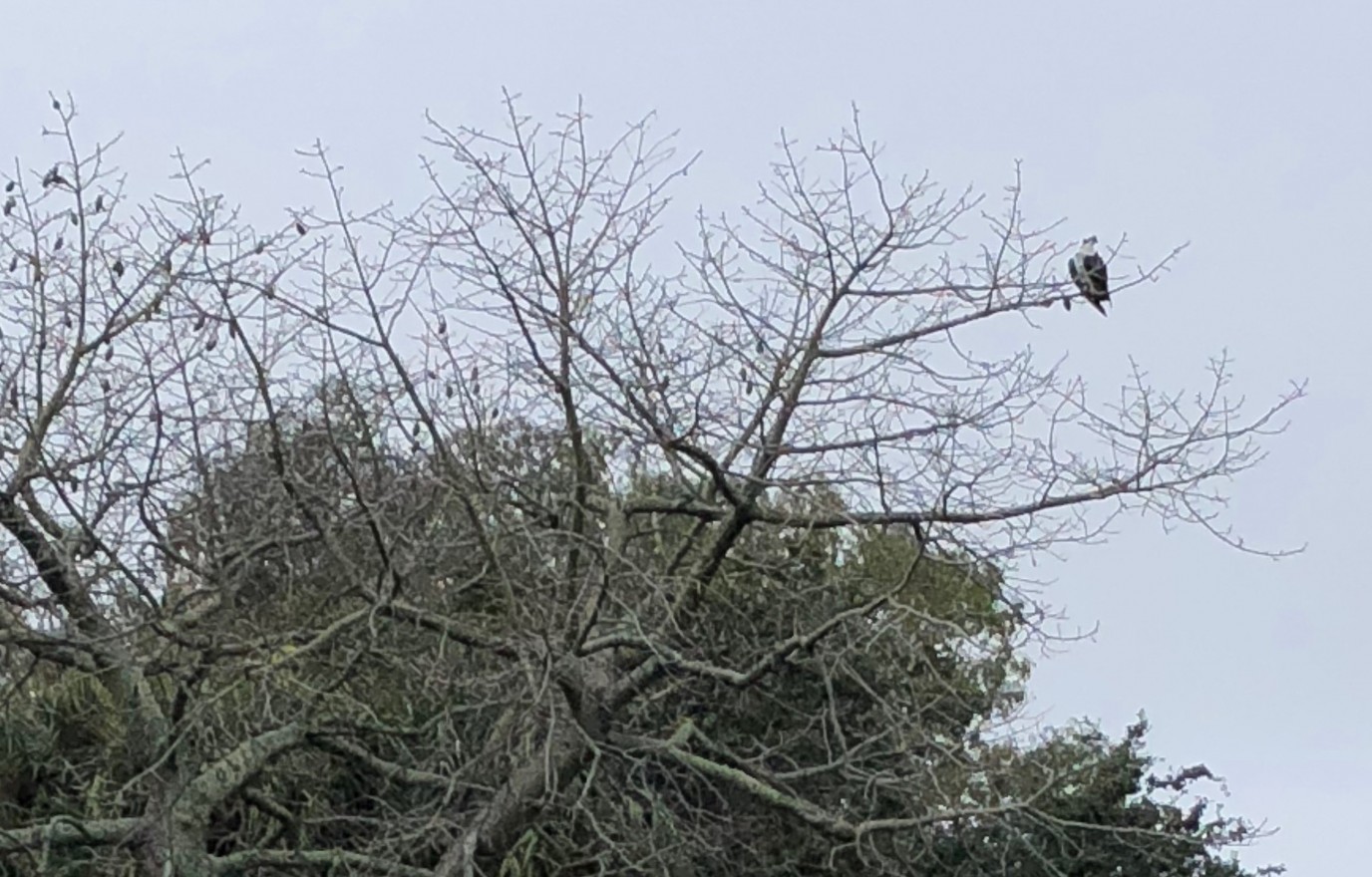
An osprey on a tree next to a pond at Eckerd College in St. Petersburg, Florida.

An osprey on a tree next to a pond at Eckerd College in St. Petersburg, Florida.
Elizabeth Forys, Ph.D., a professor of environmental science and biology at Eckerd College in St. Petersburg, Florida, focuses her studies on the preservation of species, and much of her current research focuses on endangered beach-nesting birds. However, she also has a passion for ospreys.
Barb Walker, Pinellas County’s coordinator for OspreyWatch, which is a program run by the Center for Conservation Biology that monitors the health and reproduction of ospreys worldwide, asked Forys to gather a few students to monitor nests, and she thought that “it seemed like a really good thing because a lot of the osprey nesting is during the academic year.”
Now each year, Forys leads a group of Eckerd College students in a research project about the ospreys that nest on the college’s campus and throughout St. Petersburg. The project contributes to OspreyWatch. Some of her students’ past research has focused on whether ospreys prefer to nest on natural substrate, such as trees, or artificial substrate, such as nesting platforms and streetlights; how the number of young produced at a nest is affected by sharing nests with monk parakeets; and how the installation of new nesting platforms affect the ospreys.
According to Forys, ospreys are “at the top of the food chain, so you have to have lots of lower levels to support them, so usually a diverse and resilient ecosystem will support ospreys. I notice when they are eating their fish [that] they eat a really wide range of large fish. It’s not like they’re specialists, so they are a sign that there’s lots of different species around and doing well.” In other words, biodiversity is one key to having a healthy osprey population. Moreover, “you can tell if you have healthy ponds and waters and good fisheries if the ospreys are doing well.”
According to the OspreyWatch website, ospreys are “one of very few truly global sentinels for aquatic health” because they live on every continent except Antarctica and they can be affected by overfishing and environmental contaminants, like DDT. Research about where ospreys nest and successfully produce chicks is important because it helps us to understand the health of the rest of the ecosystem. If the ospreys could not nest or produce young, it could mean that the fish population is unusually low or that pesticides, like DDT, or other chemicals are interfering with the ospreys.
Forys encourages everyone to get involved in monitoring ospreys. “People can monitor ospreys through Project OspreyWatch anywhere in the world. Locally it’s mainly, you know, students are doing it on the campus, but [with] Project OspreyWatch, anyone can collect data on ospreys and enter it. It’s a really easy to use interface, and I think the more nests are monitored the more data they’ll have, so it’s something that anybody can get involved in. A lot of people have an osprey near them.”